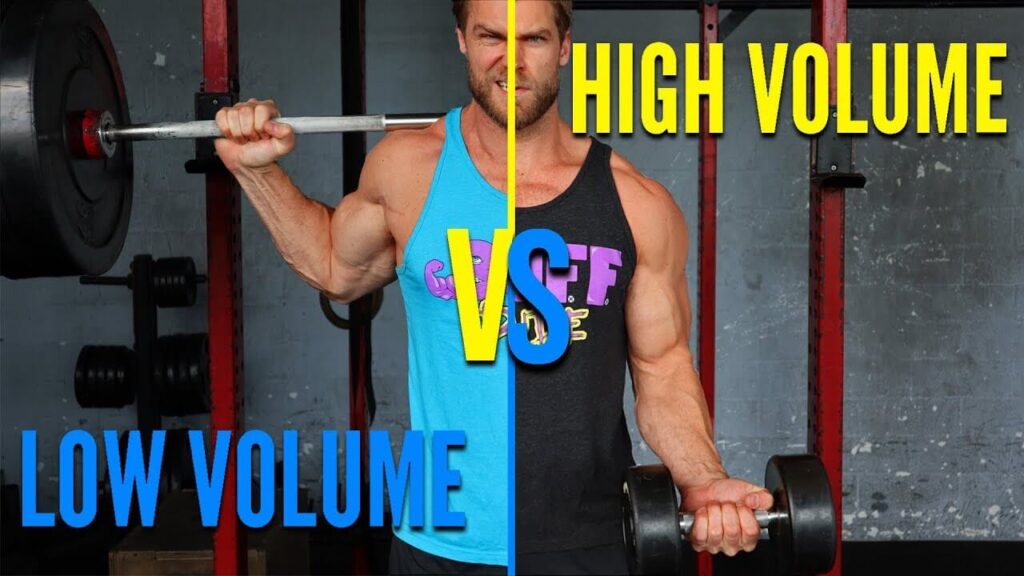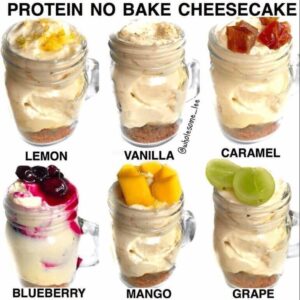If you want to get toned, build a booty, or just straight-up build all around muscle mass you’ll need to have the appropriate training volume to achieve that goal.
Training volume, training frequency, and training intensity are the 3 main variables of any training program and ultimately dictate the type of body you develop.
I would argue that training volume is the most important variable of the 3 because you can train a muscle group intensely and frequently but if you don’t have the appropriate training volume for that muscle group on a weekly basis then you won’t actually make any progress!
You can do 1 set of heavy squatting (high intensity) 5 days a week (high frequency) but that won’t actually do much to change your physique.
You need to have a good amount of training intensity and frequency to stimulate muscle growth but the real magic of that happens when you have the appropriate training volume.
I’ve been throwing around the term training volume for a bit now but what does it even mean? How can you apply it to your training? And is there such a thing as good or bad training volume?
What Is Training Volume?
To put it simply, training volume is the amount of cumulative weight that you lift for a specific muscle group or movement pattern which can most commonly be illustrated with the following formula:
Sets x Reps x Load = Total Volume
This is a classic definition often used by powerlifters for periodizing for progressive overload, but this can make things way too complicated in my opinion so it’s not always necessary to follow this exact formula unless you’re an advanced lifter solely focused on competing or becoming as strong as you can be.
For our intents and purposes, we want to use our training program to develop more muscle tissue so that we can look better. When speaking about hypertrophy for aesthetic goals we tend to lean toward the following definition:
Sets Per Muscle Per Microcycle
Microcycle is just a way to define one week of your training program.
There are a lot of factors that go into how much training volume you should personally be doing for your goals because everyone is going to vary in a few different things:
- Training Experience
- The resilience of the Nervous System
- Lifestyle Stressors
- Dietary Intake (Calories/Macros)
- Sleep and Recovery
Because of these 5 things (and probably more), your personal volume threshold will be different from the person on the bench next to you.
A great set of terms to help track and understand this concept are:
- Maintenance Volume (MV)
This is the amount of training volume needed to maintain your current muscle mass. This is important to know because reverting back to your MV during a diet phase will help you maintain muscle mass while avoiding burnout. You don’t want to over-stress your body during a diet phase so we periodize our training to be at maintenance to avoid running yourself into the ground.
- Minimum Effective Volume (MEV)
This is the starting point of hypertrophy, it’s where you actually start growing. Its effectiveness is minimal though so the progress will be slower. These slow gains are typically best served for a transitional phase or when you aren’t in too big of a surplus. This could also be effective when lifestyle stress is too high to go too hard in the gym, but you still want to make the most out of your time training.
- Maximum Adaptive Volume (MAV)
This is the ideal and where you’ll probably spend most of your training while not in a deficit. This is where you can see serious progress, but still adequately recovery to avoid burnout. Just remember that this is an adaptive set point of volume; meaning as time goes on, this will increase very slowly. This is why progressive overload still takes the crown when it comes to making gains in the gym.
- Maximum Recoverable Volume (MRV)
This is the absolute most your body can tolerate and recover from, which is great to know but it’s a fine line to dance on. Your MRV is information that allows you to progressively push further while knowing exactly when to stop. This is not a place you want to be long-term, but it can be useful to dip into temporarily for a type of supercompensation effect. I rarely advise people to train here just because you can stay in MAV longer more consistently and make amazing gains, without risking burnout or overreaching. But for some, it can be a good idea to get into their MRV for a short phase, then back off to deload and reap the benefits that supercompensation will allow to happen (gains that come during your recovery period).
Finding Your Ideal Volume
As I mentioned earlier, your ideal volume will be different than most people in the gym because of all the variables that go into it.
Here are some general guidelines that work in most cases for finding your training volume:
- 10-20 Sets Per Muscle, Per Microcycle, For Big Muscle Groups – Back, Chest, Legs, Glutes
- 5-15 Sets Per Muscle, Per Microcycle, For Smaller Muscle Groups – Arms, Rear/Ant/Lat Delt, Calves, Abs
The best way to find your volume is to start at the lower end of each definition and see how you recover after a period of time. Once you do that for a couple of microcycles, you can add 1 set to each day of training and see the changes that come in your recovery and physique.
Probably equally important here is that we need to make sure that the volume you do for each muscle group is actually quality volume that is helping you and not volume that is keeping you stagnant.
Junk vs Effective Volume
So we understand now that in order to change your physique or a specific muscle group you need to have an appropriate amount of training volume on a daily basis to make this happen.
It’s not just about doing repeated sets of a specific exercise though. Just moving some weight around isn’t going to cut it. It’s about actually working the muscle stimulating it for growth.
If you cannot perform an exercise correctly, localizing the muscular tension in the correct region, then you’re not adequately stimulating hypertrophy or correctly calculating your volume.
In other words, this is the difference between “Junk Volume” and “Effective Volume.” The volume that shouldn’t even be counted, because they’re not quality reps that are actually hitting the muscle groups you’re supposed to be (or thinking you are) focusing on. Whereas effective volume IS based on quality reps, focused on the exact area you’re targeting.
This is the problem with counting volume, sets per muscle group per week, in your program before you master your own personal biomechanics. Count your sets once you know your sets are effective.
The best way to ensure that the volume you are getting is Effective Volume and not Junk Volume is by choosing exercises that you can perform properly. This is where an individualized training program is most valuable. The exercises that you perform best with by establishing a strong mind-muscle connection varies from person to person.
If someone is trying to increase volume to accomplish more growth – because as we know in research more volume = more muscle – but 50% of their volume is junk volume. they’re training misdirectionally, meaning they’re doing lots of work but not reaping the benefits.
This work in the gym does not go unnoticed, though. The nervous system takes a hit and most likely so do the joints associated with the movement patterns being done.
That sounds like a pretty lame result for the work you’re putting in, right?
Rather, if we can slow down and focus on finding the best exercises for us personally (exercise selection) and begin to master the mechanics of the movement (execution), we can actually see really great results without adding ANY volume at all (for a given time, eventually it’s needed).
This is how people grow with low volume programs, most often. Because they do have a good internal focus and connection to how their body’s moving and responding to the training they’re doing. They can fire muscles on command, execute a movement in a full range of motion without pain or discomfort, and they’re patient enough to take their time inside a training session.
Make sense? By nailing these two factors, we can be far more successful utilizing the volume inside our training – because they will need to be manipulated at some point. But with this, we accomplish more with less and then when we DO increase volume and/or intensity – we get much more out of it and usually can recover much better from it because we didn’t need to beat ourselves up to get there.
For a great example of appropriate training volume check out our products!







